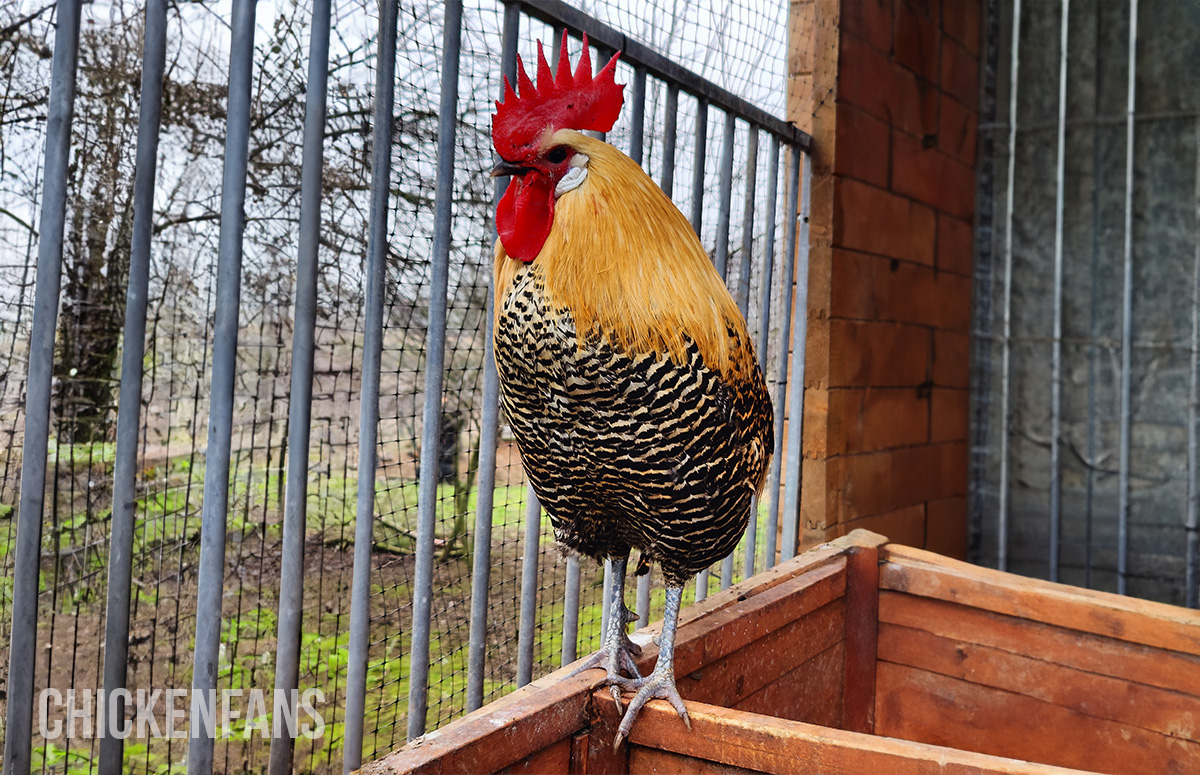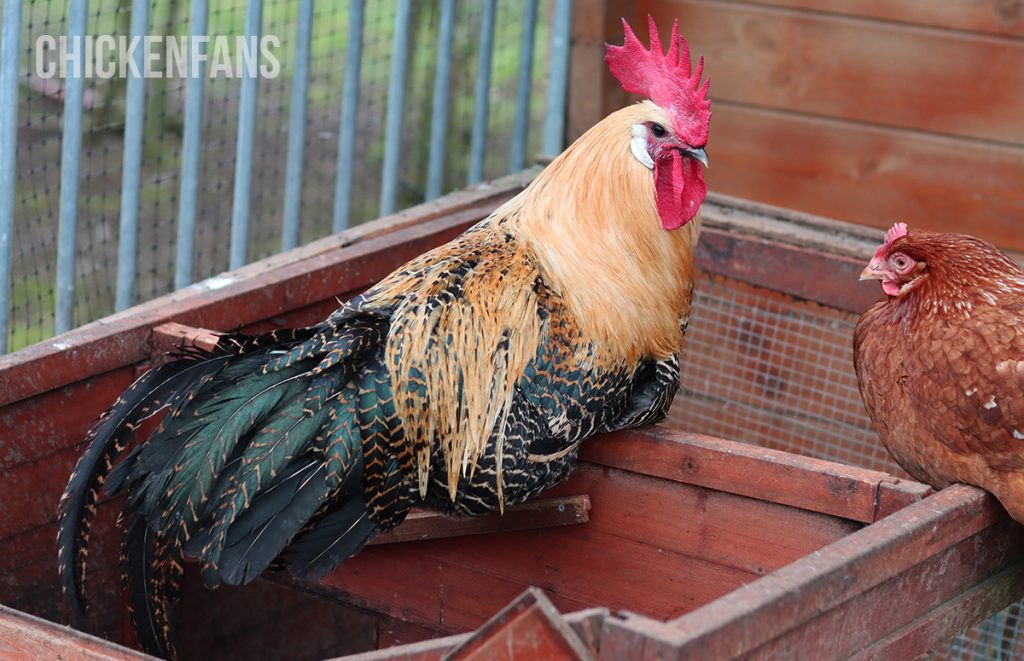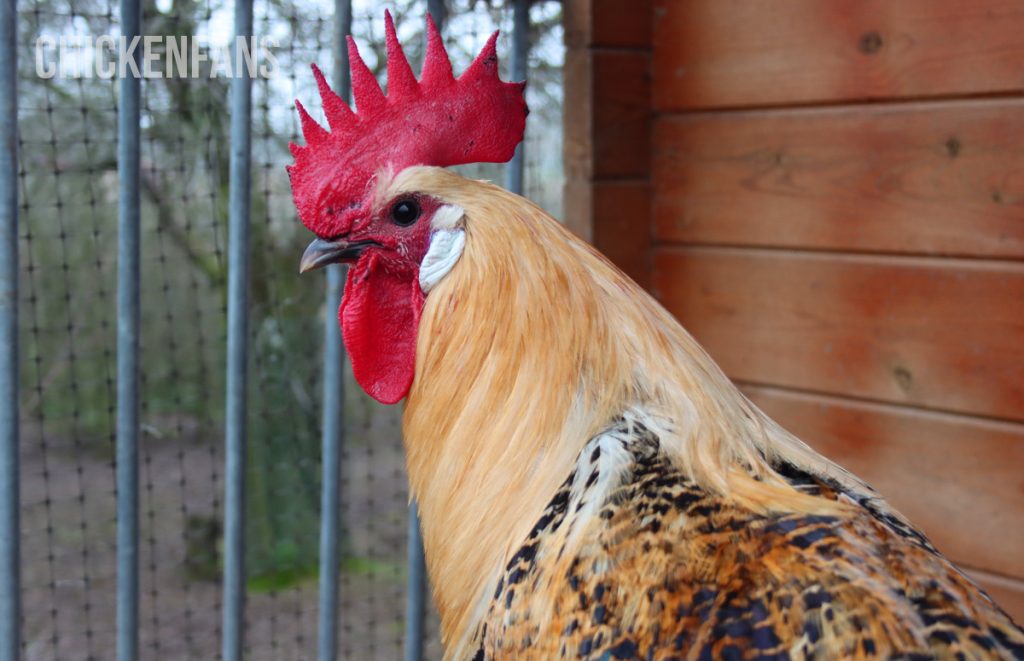Campine Chickens: Friendly But Flighty

Are you a chicken enthusiast looking for a new breed to add to your flock? Or you’re a novice chicken owner seeking a visually stunning breed. Whatever your motivation, the Campines chicken breed should be on your radar.
- Campine hens lay around 3 to 4 eggs weekly
- Belgian heritage breed, considered rare
- Active foragers, can be flighty
- Not cold-hardy
| Eggs | Up to 200 eggs yearly |
| Egg Color | White |
| Egg Size | Medium |
| Weight | 4 – 6 lbs |
| Hardiness | Heat, not cold-hardy |
| Temperament | Active and flighty |
| Beginner-friendly | Yes |
| Color | Gold and Silver |
Characteristics
The Campine chicken is visually captivating with its distinct plumage and physical attributes. They are relatively small chickens, with males typically weighing around 6 pounds (2.7 kg), while females are slightly lighter, weighing around 4 pounds (1.8 kg).
One of the defining features of Campines is their beautiful plumage. The breed comes in two color varieties: Silver and Golden. Silver Campines have pure white heads and neck hackles. The rest of their body is barred with black, exhibiting a glossy beetle-green sheen against a white background.

Golden Campines showcase a rich gold color on their heads, neck hackles, and body ground, while still displaying the distinctive barred pattern.
Campines have a large single red comb that can be floppy or not. Their legs are dark blue, and they have red faces and wattles, which contrast beautifully with their feathers. Campines feature white earlobes and white skin.
Personality
There are a few aspects to remember when planning to keep Campine chickens in your backyard.
Campine chickens have a flighty nature. They tend to be active and more skittish compared to other chicken breeds. Their curious behavior leads them to constantly explore their surroundings.
Because of their active nature, they need enough space to forage. They thrive in free-range environments where they can exhibit their natural behaviors. These chickens are also known for their entertainment value. They are described as amusing and can provide hours of amusement. You can even teach them tricks.
Campines are generally friendly birds, but they do not enjoy being picked up and petted. While they may not be as “cuddly” as some other breeds, it can still be fun to observe them and interact with them from a distance.
It’s important to note that Campines prefer warmer climates and may not tolerate extremely cold temperatures. Providing them with appropriate shelter from harsh weather conditions is essential.
Campines are relatively rare, so finding reputable breeders or hatcheries specializing in Campines may require some research.
Egg Production
One of the Campines breed’s most appealing qualities lies in its egg-laying abilities. They are consistent layers, producing approximately 150-200 eggs per year. This translates to an average of 3-4 eggs per week, which is quite commendable for a medium-sized breed.
The Campines breed’s eggs are medium-sized and white. While Campine chickens are not particularly known for being broody, which is advantageous for those primarily interested in egg production.
Campine Chicken Breed History
Poultry keeping has a rich history in Belgium, and the Flemish people are nicknamed “the chicken eaters.” Among various chicken breeds originating from this region, two closely related breeds stand out: the Braekel and the Campine.
Although they share a common history and ancestry, they possess distinct characteristics, with the Campine being smaller-sized than the Braekel.
Historical records trace the roots of the Campine back to Turkish fowls. The 16th-century Italian naturalist, Aldrovandus, mentions that the ancestor of the Braekel and Campine breeds descended from Turkish fowls.
Interestingly, it is said that Julius Caesar himself took Campine chickens back with him after looting Belgium.

Campines gained recognition outside of Belgium in the late 19th century after they were imported into England, followed by their introduction to North America in 1893.
An interesting fact about the Campine breed is its role in developing auto-sexing breeds. The Campine breed played a significant part in creating the very first auto-sexing breed, the Cambar. By crossing a Golden Campine with a Barred Rock, breeders introduced the barred gene, enabling a visual distinction between male and female chicks.
After that, the same breeders created a second well-known auto-sexing breed, the Legbar, which later resulted in the Cream Legbar.
Both color varieties of the Campine chicken were recognized by the American Poultry Association in 1914. At this moment, the breed status is considered ‘critical’.
Summary
Campine chickens are an excellent choice if you’re looking for a rare and unique looking bird to add to the flock. While they may not be the most profilic layers, they still lay a fair number of eggs weekly.
They are best kept in a free-ranging environment as they are active and flighty.
To learn more about chicken breeds, check out our ‘Chicken Breeds Page‘ to see every specific breed we address. Or go to our listicle breed summary on ‘The Classroom‘, or, if you’re unsure where to start, take a look at our ‘Chicken Breeds: Ultimate Beginners Guide‘.






















